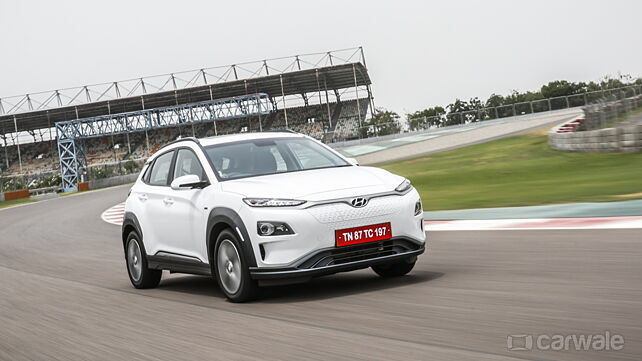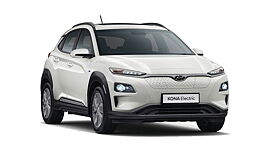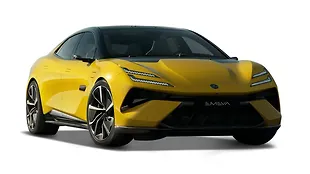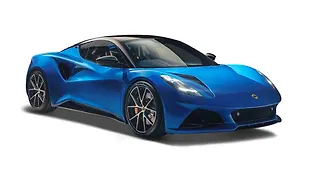What is it?

Why will I buy it?
Unique to drive, great to look at and I get to save the planet.
Why will I avoid it?
Lack of charging infrastructure, on the expensive side.
India’s first long range fully electric vehicle is finally here and we have Hyundai to thank for it. We have already driven the car before on Korean roads and in Korean spec and you can read about it here. But this is the Indian spec Kona and we got to sample it around the Buddh International Circuit to see what it’s all about.

On the design front, the Kona looks fantastic. Its compact yet has a wide stance with a long wheelbase and short overhangs giving it a sporty appeal. The front is where all the action is for the Kona with the DRL's placed in position of the headlights with the actual LED headlights located below. No family cascading grille for Kona instead you get a flattish grille with graphic elements on it with the charging port also located in one corner. On the sides the subtle cladding and skid plates at the back give it an SUV appeal. Overall the Kona Electric is a good looking car and will stand out from the crowd.
How is it on the inside?

Step inside the Kona and you are welcomed by a clean, uncluttered layout. It’s an all-black theme with a huge splash of silver on the centre console. The centre console itself boasts a unique design with a bridge type layout and you even get storage beneath it. We weren’t a fan of the silver plastic because it robs the interior of the otherwise premium feel.

The other party piece is the 7-inch touchscreen infotainment system that comes with a barrage of connectivity features including all the energy flow and battery information. You also get an electric sun roof, front heated and ventilated seats which are power adjustable, start stop button, wireless charging for the phone and more.
While the front seats are comfortable with adequate support, the same cannot be said about the rear.

While knee room is fine, it’s just not wide enough for three passengers to sit comfortably. Also with the battery laid out at the bottom, the floor is quite high which means under-thigh support suffers. At 334 litres, boot space is quite average and lesser than Hyundai’s own Venue SUV.
How does it drive?

Let’s take a look at what’s powering the Kona Electric first. Under that conventional hood is a not so conventional permanent magnet synchronous electric motor that makes a very healthy 134bhp and a massive 395Nm of torque. You also get driving modes to choose from namely Eco+, Eco, Comfort and Sport.

Driving on a racetrack, the other modes didn’t really make sense so Sport mode it was. Being an electric, there is absolutely no lag and the response is immediate. Acceleration is surprisingly brisk and it’s only the silent nature of the electric motor that masks the feeling of speed.

Hyundai claims a 0-100 kmph time of 9.7 seconds and that’s quicker than most large sedans and quick hatches. And there is no drop even after crossing 100 kmph as the speedo surges past 150 kmph effortlessly. It’s only after a 150 kmph that the Kona feels that it has reached its limits. For an electric city commuter those are fantastic numbers.

Getting to the most important bit now, the range. Hyundai claims a range of whopping 452 km on a single charge thanks to the high voltage, 39.2 kWh lithium ion polymer battery. Now that’s a massive figure considering the Kona will primarily be used for city commuting. Even after lapping the race circuit for a few laps, the Kona Electric held its charge pretty well and there was still plenty of battery life left.

But what remains to be seen is what the real world range will be like once we take the Kona on to the streets. As for charging, an 80% charge can be achieved in 57 minutes with DC quick charger, using the CCS Type II charging port, while a 7.2 kW Level-II charger takes 6 hours and 10 minutes.

Driving the Kona Electric around the track, it isn’t a sportscar, but the compact dimensions and the taut suspension set-up means it goes around the corners flat. The steering does not have any feel to it but sport mode adds some artificial weight to it. We can’t comment about the ride quality yet because we only drove on the flat smooth tarmac but driving a little outside the track, the Kona electric felt stiff but quite absorbing over broken surfaces. But the true test will be how it feels driving in the real world with potholes and large speed breakers.
Should I buy one?

If this is going to be your only car then no. Even with Hyundai offering a humungous amount of support by providing 2 chargers and charging outlets at dealerships, One still cannot think of wandering out far with the Kona at least until the government steps in with more support by adding more charging outlets.

But if you can afford the Rs. 25.3 lakh sticker price and you want to own a car that is unique and an absolute tech-fest, the Hyundai Kona Electric will keep you interested for a long time. And with a 3 year warranty for the car and a very impressive 8 year/1.6 lakh km warranty for the battery, it should be a trouble-free ownership.
Where does it fit in?

The Kona Electric gets the advantage of being the only car of its kind and has no direct rival. But with the Nissan Leaf and the Nissan Note e-Power coming in soon it should be getting some competition.
Photos: Kapil Angane


































